Try GOLD - Free
coral frenzy
African Birdlife
|March/April 2021
Coral trees (Erythrina species) are found in tropical and subtropical areas around the world, including in southern Africa where nine species occur.

Conspicuous and well-known, they are commonly seen in gardens and are planted along streets and driveways to provide shade and show off to best advantage their eye-catching displays of orange-red flowers. These are borne generally in winter or spring each year, covering the leafless grey-brown branches in a profusion of colour that draws the eye from a great distance and changes the palette of urban neighbourhoods.
It is not for our benefit, though, that this floral spectacle has evolved. It is intended to lure the trees’ principal pollinators – passerine birds – to visit the flowers and play their part in the plants’ procreative process. In return, the birds will be rewarded with copious quantities of nectar hidden deep among the petals.
Like various Aloe and Schotia (boerbean) species, coral trees belong to a group of valuable bird-pollinated plants that are predictable providers of nectar each year, predominantly in winter and spring. They, and others such as Strelitzia reginae, are pollinated mainly by a range of birds that feed on nectar opportunistically, as opposed to the highly specialised sunbirds and sugarbirds. Their flowers are ideally suited to attracting birds, being bright red or orange in colour, tubular in shape and odourless, and they produce generous quantities of dilute nectar. The genus Erythrina belongs to Fabaceae, the pea family, and its flowers can be recognised as such, with relatively thick, leathery petals arranged in a broadly open tubular shape instead of the typically curved and fused tube of many plants pollinated by sunbirds. They are presented in densely spiralled clusters at the ends of branches that provide a convenient perch for visiting birds. Not only are
This story is from the March/April 2021 edition of African Birdlife.
Subscribe to Magzter GOLD to access thousands of curated premium stories, and 10,000+ magazines and newspapers.
Already a subscriber? Sign In
MORE STORIES FROM African Birdlife
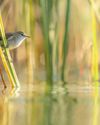
African Birdlife
stories begin at EYE LEVEL
ALTHOUGH I HAVE been taking photographs since 1998, it wasn't until 2019 that my hobby evolved into a serious pursuit. That's when I began to see photography not just as a means of capturing a moment, but as a form of art - something that can stir emotion, spark wonder and tell a deeper story.
1 mins
July/August 2025
African Birdlife
ALBERT the Wandering Albatross
Ahoy, shipmates, grab a pew and let me spin my yarn.
3 mins
July/August 2025
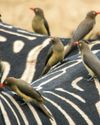
African Birdlife
I'll be back...
Southern African populations of oxpeckers were hit by triple hammer blows during the late 19th century and much of the 20th.
2 mins
July/August 2025

African Birdlife
BINDO and SABAP2
A match made in data science
2 mins
July/August 2025
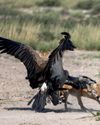
African Birdlife
PREDATORS of the pan
As regular visitors to Mabuasehube in the Botswanan sector of the Kgalagadi Transfrontier Park, we have often seen vulture feathers lying in the area of the waterhole at Mpayathutlwa Pan and have frequently observed a pair of black-backed jackals in the vicinity.
1 min
July/August 2025
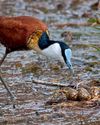
African Birdlife
Jacana & the egg thief
While on a photo expedition in the Richtersveld National Park with my brother Peter, we were watching one particular African Jacana on the Gariep River.
2 mins
July/August 2025
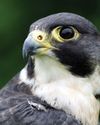
African Birdlife
A STRIPE FOR ANY OTHER PURPOSE?
Uncovering the adaptive complexities of falcons' malar stripes
2 mins
July/August 2025
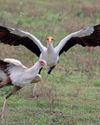
African Birdlife
grassland GLADIATORS
The Secretarybird is a highly soughtafter species for most birders on their first visit to Africa. It looks so strange, like a cross between a stork and an eagle. Even though it is widespread, occurring in almost any suitable habitat (grassland, open savanna and Karoo shrubland), it's generally uncommon.
1 mins
July/August 2025

African Birdlife
SECRETS SKY
Jessica Wilmot is the driving force behind BirdLife South Africa's Flyway and Migrants Project, working across borders to safeguard some of the planet's most threatened species and habitats. Supporting BirdLife International's East Atlantic Flyway Initiative, Jessica is at the heart of efforts to keep our skies alive with birds, particularly the enigmatic European Roller, which is her current focus and passion.
6 mins
July/August 2025
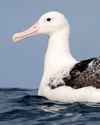
African Birdlife
Southern SIGHTINGS
Autumn is generally known to be quieter in terms of rarities across southern Africa, but the review period still had a few surprises for us, including a new species for the subregion. As always, none of the records included here have been adjudicated by any of the subregion's Rarities Committees.
3 mins
July/August 2025
Translate
Change font size
